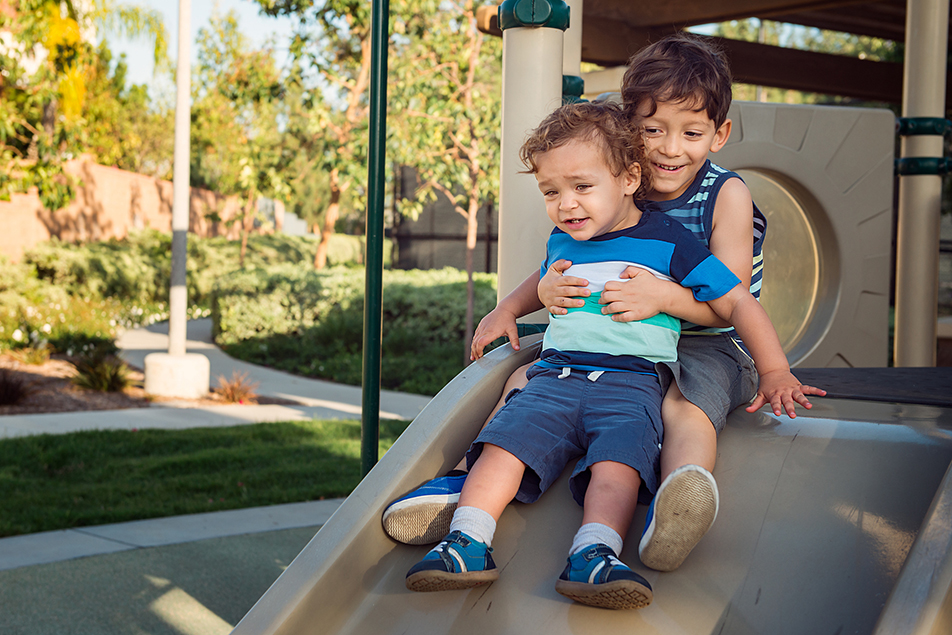
This post was written by Mark Rohaus, MD, PPG – Pediatrics.
Now that the weather is warming and more and more children are venturing outside to play, parents are asking about the best strategies to keep their kids safe this summer during the ongoing COVID-19 pandemic. Furthermore, with changes to social distancing recommendations, many parents are feeling lost or uncertain about how to best move forward when it comes to summer activities. I hope the following review on current recommendations and hygiene principles will help clarify some of the uncertainty and keep kids safe this summer.
Exercise
Staying physically active is an important part of maintaining good health. Physical exercise promotes healthy growth and development in children, it provides a bonding activity for families and can be helpful in relieving stress. During this time of COVID-19, parents should seek opportunities to have their children engage in physical activity. While some organized sports and camps have been canceled in many areas across the state, there are still plenty of options for families to involve their children in outdoor activities.
Park safety
Many state and local parks have certain areas open for use, such as trails, campgrounds and waterways. If you are unsure if your local or state park is open, visit their website or call ahead to see which areas of the park are open to the public. Certain components of parks are likely to remain closed for some time, such as concession stands, restrooms, picnic table shelters and other areas where people may congregate closely. The CDC and the state of Indiana are also recommending playgrounds remain closed at this time in an effort to limit the spread of COVID-19. As Indiana progresses forward with its Back On Track plan, several more opportunities such as YMCA programs, youth summer camps and some sporting events, are likely to be available with certain restrictions.
When selecting a park, parents should consider visiting parks with wide open spaces, such as a field, as opposed to smaller areas which may require close contact with others. Children may participate in activities in the same park; however, they should have at least 6 feet between them and any non-household family members or other park goers. Parents should also select parks that are close to their home as opposed to further away, as well as plan activities that can be conducted outdoors.
Pool safety
Swimming can be a great form of physical activity for children and the state of Indiana recently approved the reopening of community pools in accordance with CDC guidelines. Currently, there is no evidence that the virus causing COVID-19 spreads to people through properly disinfected water, such as that used in pools. As local swimming venues consider reopening, the CDC cautions on maintaining good hand-hygiene, using facial coverings when out of the water (unless the child is 2 years of age or younger), maintaining a social distance of at least 6 feet from non-household members, and covering coughs and sneezes.
Children and prevention
The spread of the virus causing COVID-19 can take place by inhaling the infectious respiratory droplets released into the air by a nearby person from a cough or sneeze. In addition, touching a surface contaminated with COVID-19 virus and then touching your eyes, nose or mouth can also spread the disease. Practicing proper hygiene and teaching your child about how germs are spread is important.
Good hand hygiene is one of the most effective measures in eliminating the spread of many types of infectious germs. Having children wash their hands with soap and water for at least 20-30 seconds is preferable. However, if only hand sanitizer is available, then using a hand sanitizer with at least 60% alcohol and allowing the sanitizer to dry on your hands without wiping it off, is effective against most germs including the virus causing COVID-19. A good time to apply hand sanitizer is after children have finished playing outside, before eating, after using the bathroom, and after touching surfaces commonly contacted by others such as hand rails. Parents should also teach children to sneeze or cough into their sleeve or elbow as opposed to their hands to limit the spread of germs. Facial coverings or masks are currently recommended for all people over 2 years of age when in public. Facial coverings are most essential in times when physical distancing is difficult.
Other measures to limit the spread of COVID-19 include keeping children home that are ill with symptoms such as fever, cough, runny nose, vomiting or diarrhea. Further, be sure to keep children and any other family members home who have been or may have been exposed to someone with COVID-19 in the past 14 days. COVID-19 symptoms typically develop within 2-14 days of having been exposed and may consist of fevers, chills, cough, sore throat, muscle aches, loss of smell and/or taste, and difficulty breathing. In the event that any of these concerns develop, contact your child's pediatrician for recommendations on how to proceed.
This is a time unlike any other in our lives, and we are all experiencing it together. Setting time aside to plan an outdoor activity for your child is not only important, but a great opportunity to incorporate fun into their summer.



